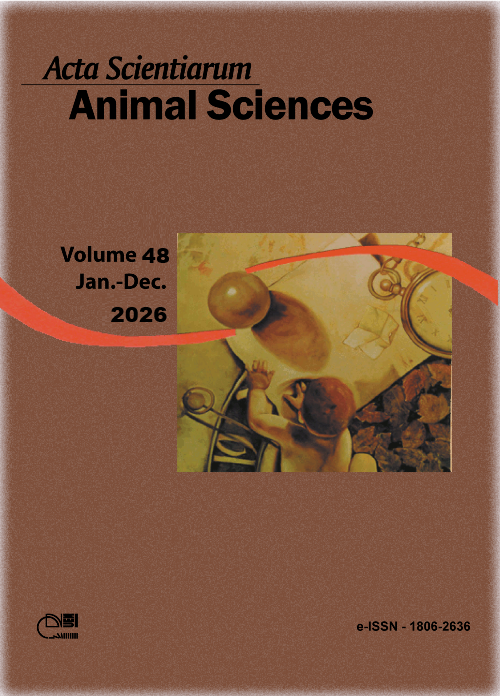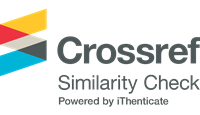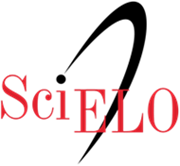Cosmos sulphureus: environmental bioindicator of diversity of bees
Resumo
Among the flowers most visited by bees in Brazil, those belonging to the Asteraceae family stand out, and one of them is the cosmos (Cosmos sulphureus). This study aimed to evaluate the frequency, profile of visits and the type of collection of bees in the flowers of the cosmos during the year. The relationship between bees and cosmos flowers was observed by counting the frequency of visits and of material (nectar and / or pollen) to be collected. The foraging behavior of different bee species was also evaluated. The visits of the most frequent bees took place between 7:00 am and 12:00 pm. Among the main species of bees that made visits to the cosmos, those of the Halictidade family were noticeable: Pseudaugochloropsis graminea and Augochlora sp., Megachile rotundata solitary bees and, to a lesser extent, Plebeia remota stingless bees, Trigona spinipes stingless bees and Xylocopa frontalis and X. griscenses carpenter bees. Sporadic visits by stingless bees Melipona scutellaris, M. subnida, Partamona helleri, Scaptotrigona sp., Nannotrigona testaceicornes and africanized honeybees Apis mellifera. The cosmos should be planted close to apiaries and meliponaries as a source of food for Africanized honey bees, stingless bees and solitary bees.
Downloads
Referências
Antonini, Y., Costa, R. G., & Martins, R. P. (2006). Floral preferences of a neotropical stingless bee, Melipona quadrifasciata Lepeletier (Apidae: Meliponina) in an urban forest fragment. Brazilian Journal of Biology, 66(2a), 463-471. https://doi.org/10.1590/S1519-69842006000300012
Araujo, C.A., Morgado, C. S. A., Gomes, A. K. C., Gomes, A. C. C., & Simas, N.K. (2021). Asteraceae family: a review of its allelopathic potential and the case of Acmella oleracea and Sphagneticola trilobata. Rodriguésia, 72. https://doi.org/10.1590/2175-7860202172137
Banaszak-Cibicka, W., & Żmihorski, M. (2012). Wild bees along an urban gradient: winners and loosers. Journal of Insects Conservation, 16, 331-343. https://doi.org/10.1007/s10841-011-9419-2
Barbieri Junior, C. A., & Dias, A. M. P. (2012). Fauna de Braconidae (Hymenoptera) em áreas nativas, degradadas e em recuperação do Vale do Paraiba, Estado de São Paulo, Brasil. Brazilian Journal of Biology, 72(2), 305-310. https://doi.org/10.1590/S1519-69842012000200011
Barbosa, D. B., Crupinski, E. F., Silveira, R. N., & Limberger, D. C. H. (2017). As Abelhas e seu serviço ecossistêmico de polinização. Revista Eletrônica Científica da UERGS, 3(4), 694-703. https://doi.org/10.21674/2448-0479.34.694-703
Bascompte, J., & Jordano, P. (2007). Plant–animal mutualistic networks: the architecture of biodiversity. Annual Review of Ecology Evolution and Systematics, 38, 567-593. https://doi.org/10.1146/annurev.ecolsys.38.091206.095818
Cancelli, R. R., Evaldt, A. C. P., & Bauermann, S. G. (2007). Contribuição à morfologia polínica da família Asteraceae Martinov. no Rio Grande do Sul - parte I. Pesquisas Botânicas, 58, 347-374.
Constanza, R., d'Arge, R., Groot, R., Farber, S., Grasso, M., Hannon, B., Limburg, K., Naeem, S., O'Neill, R. V., Paruelo, J., Raskin, R. G., Sutton, P., & van den Belt, M. (1997). The value of the world’s ecosystem services and natural capital. Nature, 387, 253-260. https://doi.org/10.1038/387253a0
Costa, C., & Oliveira, F. (2013). Polinização: serviços ecossistêmicos e o seu uso na agricultura. Revista Verde de Agroecologia e Desenvolvimento Sustentável, 8(3), 1-10.
Dafni, A. (1992). Pollination ecology: a practical approach. Oxford University Press.
Denisow, B., Strzałkowska-Abramek, M., Bożek, M., & Jeżak, A. (2014). Ornamental representatives of the Genus Centaurea L. as a pollen source for bee friendly gardens. Journal of Apicultural Science, 58(2), 49-58. https://doi.org/10.2478/jas-2014-0016
Evert, R. F., & Eichhorn, S. E. (2016). Biologia vegetal. Guanabara Koogan.
Grimm, N. B., Faeth, S. H., Golubiewski, N. E., Redman, C. L., Wu, J., Bai, X., & Briggs, J. M. (2008). Global change and the ecology of cities. Science, 319(5864), 756-760. https://doi.org/10.1126/science.1150195
Oliveira, F. F., Silva, L. R. S., Zanella, F. C. V., Garcia, C. T., Pereira, H. L., Quaglierini, C., & Pigozzo, C. M. (2020). A new species of Ceratina (Ceratinula) Moure, 1941, with notes on the taxonomy and distribution of Ceratina (Ceratinula) manni cockerell, 1912, and an identification key for species of this subgenus known from Brazil (Hymenoptera, Apidae, Ceratinini). Zookeys, 1006, 137-165. https://doi.org/10.3897/zookeys.1006.57599
Jędrzejewska-Szmek, K., & Zych, M. (2013). Flower-visitor and pollen transport networks in a large city: structure and properties. Arthropod-Plant Interactions, 7, 503-516. https://doi.org/10.1007/s11829-013-9274-z
Kearns, C. A., & Inouye, D. W. (1997). Pollinators, flowering plants, and conservation biology. BioScience, 47(5), 297-306. https://doi.org/10.2307/1313191
Kerr, W. E., Carvalho, G. A., Silva, A. C., & Assis, M. G. P. (2001). Aspectos pouco mencionados da biodiversidade amazônica. Parcerias Estratégicas, 6(12), 20-41.
Klein, A. M., Vaissiére, B. E., Cane, J. H., Steffan-Dewenter, I., Cunningham, S. A., Kremen, C., & Tscharntke, T. (2007). Importance of pollinators in changing landscapes for world crops. Proceedings of the Royal Society B, 274(1608), 303-313. https://doi.org/10.1098/rspb.2006.3721
Lorenzi, H. (2015). Plantas para jardim no Brasil – herbáceas, arbustivas e trepadeiras. Instituto Plantarum de Estudos da Flora.
Malerbo-Souza, D. T., Costa, C. F. S., Pimentel, A. C. S., Andrade, M. O., Siqueira, R. A., Silva, R. C. B., Malerbo-Souza, C., & Souza, F. G. (2022). Stingless bee Trigona spinipes (Hymenoptera: Apidae) behavior on chayote flowers (Sechium Edule). Acta Scientiarum. Animal Sciences, 45(1), e56760. https://doi.org/10.4025/actascianimsci.v44i1.56760
Milet-Pinheiro, P., & Schlindwein, C. (2008). Comunidade de abelhas (Hymenoptera, Apoidea) e plantas em uma área do agreste pernambucano, Brasil. Revista Brasileira de Entomologia, 52(4), 625-636. https://doi.org/10.1590/S0085-56262008000400014
Montoya, J., & Solé, R. (2002). Small world patterns in food webs. Journal of Theoretical Biology, 214(3), 405-412. https://doi.org/10.1006/jtbi.2001.2460
Newman, M., Barabasi, A. L., & Watts, D. J. (2006). The structure and dynamics of networks. Princeton University Press.
Oliveira, M. A., Gomes, C. F. F., Pires, E. M., Marinho, C. G. S., & Della Lucia, T. M. C. (2014). Bioindicadores ambientais: insetos como um instrumento desta avaliação. Revista Ceres, 61(Suppl), 800-807. https://doi.org/10.1590/0034-737X201461000005
Ollerton, J., Winfree, R., & Tarrant, S. (2011). How many flowering plants are pollinated by animals?. Oikos, 120(3), 331-336. https://doi.org/10.1111/j.1600-0706.2010.18644.x
Olesen, J. (2006). The smallest of all worlds: pollination networks. Journal of Theoretical Biology, 240(2), 270-276. https://doi.org/10.1016/j.jtbi.2005.09.014
Potts, S. G., Biesmeijer, J. C., Kremen, C., Neuman, P., Schweiger, O., & Kunin, W. E. (2010). Global pollinator declines: trends, impacts and drivers. Trends in Ecology and Evolution, 25(6), 345-353. https://doi.org/10.1016/j.tree.2010.01.007
Richards, K. W. (1993). Non-Apis bees as crop pollinators. Revue Suisse de Zoologie, 100, 807-822. https://doi.org/10.5962/bhl.part.79885
Rcpol. (2021). Rede de catálogos polínico online. https://rcpol.mn.ufrj.br/pt/home/
Roberto, G. B. P., Montagnana, P. C., Brocanelli, F. G., Grisolia, B. B., Fang, Z. X., Matsuda, D. C., & Campos, M. J. O. (2015). As abelhas polinizadoras nas propriedades rurais. Funbio.
Silveira, F. A., Melo, G. A. R., & Almeida, E. A. B. (2002). Abelhas brasileiras: sistemática e identificação. Fundação Araucária. Belo Horizonte, Fernando A. Silveira. 253 p.
Silveira Neto, S., Nakano, O., Barbin, D., & Nova, N. A. V. (1976). Manual de ecologia dos insetos. Escola Superior de Agricultura.
Steiner, J., Zilikens, A., Kamke, R., Pickbrenner, E., Feja, E. P., & Falkenberg, D. B. (2010). Bees and melittophilous plants of secondary atlantic forest habitats at Santa Catherina Island, Southern Brasil. Oecologia Australis, 14(1), 16-39. https://doi.org/10.4257/oeco.2010.1401.01
Stelzer, R. J., Chittka, L., Carlton, M., & Ings, T. C. (2010). Winter active bumblebees (Bombus terrestris) achieve high foraging rates in urban britain. Plos One, 5(3), e9559. https://doi.org/10.1371/journal.pone.0009559
Taura, H.M., & Laroca, S. (2004) Biologia da Polinização: interações entre as abelhas (Hym., Apoidea) e as flores de Vassobia breviflora (Solanaceae). Acta Biology Paraná, 33(1), 143-162.
Villas-Bôas, J. (2012). Manual tecnológico: mel de abelhas sem ferrão. Instituto Sociedade, População e Natureza.
Wróblewska, A., Stawiarz, A., & Masierowska, E. M. (2016). Evaluation of selected ornamental asteraceae as a pollen source for urban bees. Journal of Apicultural Science, 60(2), 179-191. https://doi.org/10.1515/jas-2016-0031
Yamamoto, M., Barbosa, A. A. A., & Oliveira, P. E. A. M. (2010). A polinização em cultivos agrícolas e a conservação das áreas naturais: o caso do maracujá-amarelo (Passiflora Edulis f. Flavicarpa Deneger). Oecologia Australis, 14(1), 174-192. https://doi.org/10.4257/oeco.2010.1401.10
Copyright (c) 2026 Darclet Teresinha Malerbo-Souza, André Carlos Silva Pimentel, Carlos Frederico Silva da Costa, Hanya Rocha Anduras, Jordylene Felix da Silva, Camila Malerbo-Souza, André Luiz Halak

This work is licensed under a Creative Commons Attribution 4.0 International License.
DECLARAÇÃO DE ORIGINALIDADE E DIREITOS AUTORAIS
Declaro que o presente artigo é original, não tendo sido submetido à publicação em qualquer outro periódico nacional ou internacional, quer seja em parte ou em sua totalidade.
Os direitos autorais pertencem exclusivamente aos autores. Os direitos de licenciamento utilizados pelo periódico é a licença Creative Commons Attribution 4.0 (CC BY 4.0): são permitidos o compartilhamento (cópia e distribuição do material em qualqer meio ou formato) e adaptação (remix, transformação e criação de material a partir do conteúdo assim licenciado para quaisquer fins, inclusive comerciais.
Recomenda-se a leitura desse link para maiores informações sobre o tema: fornecimento de créditos e referências de forma correta, entre outros detalhes cruciais para uso adequado do material licenciado.








































